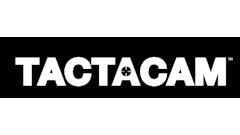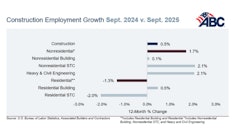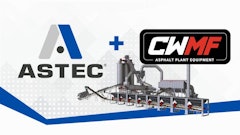
Employee turnover is notoriously high in construction — outpacing other industries by an average of 2.5% in 2024. This churn carries a steep price. Research shows that hiring and training new construction staff can cost between 50 and 200% of each worker’s annual salary. High turnover also leads to knock-on effects, hindering your ability to build a reliable project pipeline, accurately predict overhead and avoid overworking your people.
The project-based nature of construction work, ever-changing compliance regulations and persistent worker shortages contribute significantly to the industry’s churn rate. However, these sweeping issues are largely out of your control. Well-built construction firms succeed by focusing on and refining what is within their purview.
According to a survey by the Building Talent Foundation, employee engagement plays an outsized role in worker loyalty within the construction industry. Addressing the underlying factors impacting your workforce’s engagement and taking proactive steps to improve it can protect your HR budget and help future-proof your operations and drive innovation. However, like any good construction project, it takes thoughtful planning, strategic execution and openness to course-correction.
Laying the Foundation for Loyalty
If you were installing a plumbing system in a building, would you go out to your yard, look around and ask yourself, “What kind of system can I build with the stuff I have here?” Of course not. And yet, too often, business leaders take this exact, haphazard approach toward their company culture, the foundation on which employee engagement and loyalty lie.
One reason for this misstep is that firms often misunderstand why good workers stay at their jobs. Compensation is always a factor in employee loyalty, but BTF’s study reveals it’s not the primary motivator among construction professionals. Both frontline and office workers report that clear career advancement opportunities, the chance to learn new skills, and feeling “valued and respected at work” factor more heavily in their commitment to an employer than higher wages.
This sort of workplace culture doesn’t appear spontaneously. It emerges from a people-first mindset that directs all aspects of how your run your business.
Shift Your Mindset and Make a Plan
Start your shift toward a people-first approach by assessing your current culture. Surveys, interviews, and employee observations are great ways to gauge your company’s current culture and engagement levels. Remember that getting honest feedback requires a strict commitment to psychological safety. If employees fear retaliation for critiquing the status quo, they won’t share their true feelings or concerns.
Once you’ve identified your current culture’s shortcomings, plan for change. Ask yourself, “What values do we need to prioritize to boost employee loyalty?”
Creating simple guidelines based on the values you wish to imbue throughout the business can help everyone with this mindset shift. For example, say you want to prioritize transparency — a fundamental element in building trust within your workforce. Your guideline might be: “We believe in sharing information openly and regularly to ensure everyone understands the rationale behind crucial business decisions and to encourage collaborative problem-solving.”
Take Action to Boost Loyalty
With your people-first values clearly articulated, transform your ideals into loyalty-enhancing actions.
These three strategies can help your employees feel more deeply connected to their work and eager to engage long-term in your company’s success:
1. Show Your People You See — and Value — Their Contributions
Recognition goes a long way toward making your workers feel valued. Show appreciation for long-term employees — perhaps offering bonuses or promotion opportunities — to cement the notion that you place real value on loyalty.
Also, rather than promoting the big project the company won or the top profit quarter you had, highlight the admirable actions of the people who contributed to those outcomes — reframing doing the right things every day as wins. This approach helps people in more under-the-radar roles feel appreciated and keeps those who know they’re essential focused on the greater good.
For example, experienced electricians can sometimes develop egos that are the size of their six-figure incomes. A project manager could channel that sense of self-importance into something beneficial to all by going to that worker, praising his skill and then asking a couple of small favors: Might he be willing to help the less-experienced guys if they have questions and create an environment where people can laugh but still do good work? That plumber will feel valued and encouraged to support a positive worksite culture.
When you celebrate more people’s efforts and reward good work more often, you increase your workers’ sense of purpose. You want your employees to be proud of themselves and where they work. This elevated goal raises the standard from simply meeting your people’s needs to inspiring them to think and say great things about their jobs and your organization.
2. Create Opportunities for Growth and Development
Giving your people opportunities to learn new skills and advance in their careers increases their likelihood of staying with your organization. It also ensures a pipeline of up-and-coming talent and prevents your most talented people from leaving.
A few years ago, I had a breakfast meeting with a contractor friend whose business was thriving. When I asked for the secret to his success, he replied: “I have three amazing people running our three key departments.” I risked screwing up the positive vibe by asking him about succession plans — who would step into these hard-to-fill roles when the veteran leaders retired? He quickly changed the subject.
Sure enough, a couple of years later, one of the leaders developed cancer and retired early. Worse still, the only employee who could have easily stepped in to fill the role had left the company a couple of months earlier after my friend decided to tell him there were no plans to provide the growth opportunities he wanted. If my friend had facilitated the development that the high-potential employee desired, or better still, had enabled his workforce at large to upskill, my friend wouldn’t have had to step back into the day-to-day of the business.
One effective way to create a robust talent pipeline — while giving employees opportunities to grow — is to develop a formal mentoring program. Your organization will reflect the behaviors of your most influential employees. So, select mentors who are the kind of people who demonstrate the cultural characteristics you wish to perpetuate. Avoid individuals who perform their roles excellently, but do not embody the values you want to nurture in others.
3. Handle Disengagement and Safety Concerns Promptly
Team members rely on their leaders to inspire and protect them from dynamics that hinder engagement.
Sometimes, toxic dynamics emerge due to circumstances beyond your control. If a plumbing team drills holes in the wrong spot in the concrete and reacts poorly when the concrete sub calls them on the mistake, the sub may, naturally, feel disgruntled.
Other times, managers’ hesitance to reprimand or terminate employees who are undermining morale results in a sour work environment. If two of your team members consistently take unscheduled breaks or badmouth the company, and your team leader never says anything, you may start to wonder if anyone cares if you are working hard or not.
Regardless of the source, leaders must be proactive in addressing disengagement. Disengaged individuals may be perfectly capable of performing their roles, but their bad attitudes are catching. Handling signs of disengagement early on can prevent minor issues from escalating into significant problems.
The same applies to safety concerns. Construction means long hours and consistent exposure to risks. Conduct regular safety training to help workers avoid on-the-job hazards and promote best practices. Allowing unsafe behaviors to go unchecked will prompt your best employees to head toward the exits.
Evaluate and Adjust
Building employee engagement and loyalty is not a one-size-fits-all or one-time-fixes-all endeavor. Company leaders should regularly evaluate the company culture, seek feedback for improvement, and respond to that information in ways that show their workforce that they are listening to their needs.
When people believe their employer has faith in their judgment and abilities, they feel more ownership over their roles in contributing to the company’s success. This sense of ownership not only supports engagement and retention but also encourages innovation. So, if a team member has an idea for improvement or innovation, hear them out. If the idea has merit, test it on a limited basis. Pilots that generate results can become the basis for new guidelines, processes, and approaches.
In an industry plagued by turnover, companies that invest in building team loyalty will outpace the competition. Engage your people in ways that elevate your projects and the individuals who make them possible.



















